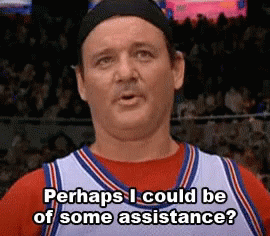Billy Howell wasted about $600 before he figured out how to make Facebook ads work for his Arlington Bagel newsletter. Now he's consistently getting new subscribers for less than a dollar.
When Billy first started running Facebook ads for his newsletter, he did what most people do – created a simple image ad, targeted his local area, and hoped for the best. The results were... underwhelming. Cost per acquisition was all over the place, sometimes hitting $5-6 per subscriber.
After a lot of testing (and yes, burning through money he'd rather have kept), he's developed a Facebook ad strategy that consistently brings in new subscribers at a fraction of the cost.
The Placement Secret Most People Miss
Here's the first game-changer Billy discovered: all Facebook ad placements are not created equal.
When you set up a Facebook campaign, the default setting is to run your ads across all placements. This is great for Facebook's bottom line but terrible for yours.
After testing dozens of combinations, Billy found that Instagram Stories and Reels consistently deliver the lowest cost per acquisition for local newsletter subscriptions – often 50-70% cheaper than feed placements.
Why? His theory is that the immersive, full-screen nature of Stories and Reels creates fewer distractions and more focused attention on your offer. Plus, these formats tend to reach a younger, more engaged audience.
Billy immediately cut out most other placements like in-app videos, audience network, and right column ads. His cost per acquisition dropped dramatically overnight.

Video Crushes Static Images
Billy's second breakthrough came when he switched from static images to simple video ads.
He's not talking about fancy productions – literally just basic videos showing the newsletter with a simple voiceover or talking head. Sometimes he'll do a quick screen recording of scrolling through the newsletter.
These basic videos consistently outperform even the best-designed static images. In his tests, video ads reduced acquisition costs by about 30% compared to image ads with identical copy and targeting.
The Dynamic Creative Advantage
After testing individual ads for months, Billy switched to using Facebook's dynamic creative feature, which automatically tests different combinations of assets.
Here's how he sets it up:
Upload 3-4 different video clips
Write 4-5 headline variations
Create 2-3 different descriptions
Add 2-3 call-to-action options
Facebook automatically creates different combinations and optimizes toward what's working best. This removed hours of manual testing from his workflow while improving results.
The performance difference wasn't massive – maybe 10-15% improvement – but the time savings have been enormous for Billy.
Ultra-Specific Targeting That Actually Works
Facebook's targeting capabilities are powerful, but Billy found that super-specific targeting works best for local newsletters:
Create a 10-mile radius around your core area
Exclude neighboring towns/cities if they're not part of your coverage
Don't narrow the demographic targeting too much – he found broader age ranges actually work better than narrow ones
Use interest targeting sparingly – local news, community events, and your specific town name are usually sufficient
One unexpected insight: Billy's audience skews about 65% female, with women between 28-44 being the most responsive. This is relatively standard in the local newsletter space. He now creates separate ad sets with slightly different messaging for this demographic.

The Ad Copy Formula That Converts
After testing dozens of variations, Billy's found this basic structure works consistently well:
Headline: "Stay in the know about [TOWN NAME]"
Hook: "Never miss another [relevant local event] again"
Pain point: "Tired of finding out about great local events after they happen?"
Solution: "[NEWSLETTER NAME] delivers [BENEFIT] straight to your inbox [FREQUENCY]"
CTA: "Join 3,500+ local readers"
He's found that focusing on FOMO (fear of missing out) consistently outperforms other approaches for local content.
Practical Budget Approach
Billy started with just $10-15 per day split across different ad variations. Once he identified what worked, he settled into a comfortable $20-40 daily budget that delivers consistent growth.
The key was incremental testing – he didn't go all-in on one approach until he had data showing it worked. He recommends starting small and scaling only what's proven effective.
Dealing with Audience Saturation
One challenge with local newsletter marketing is the limited audience size. Eventually, you'll start reaching the same people repeatedly.
Billy's found that rotating creative every 2-3 weeks helps combat ad fatigue. He also occasionally pauses campaigns for a week or two before returning with fresh creative. This approach keeps acquisition costs stable even as he reaches deeper into his potential audience.
The beautiful thing about local newsletter marketing is that, unlike many other businesses, your CPA will likely be quite low because you're offering something people genuinely want and can target precisely who would want it.
So that's Billy Howell's Facebook ad playbook for growing a local newsletter. These approaches have taken him from zero to 3,500+ subscribers in about six months. If you try these strategies, I'd love to hear your results – the local newsletter landscape is still evolving, and we're all figuring this out together.
How I Can Help You Succeed
Before we dive into this week's insights, I want to make sure you know about all the resources available to support your local newsletter journey:
🎙️ The Podcast - Deep-dive conversations with successful newsletter operators sharing their playbooks and lessons learned | Link
📧 This Weekly Newsletter - Quick, actionable tips delivered straight to your inbox every week | Link
🧠 1:1 Consulting - Personalized guidance tailored to your specific newsletter challenges Link
🚀 Launch Accelerator - A structured program to help you go from idea to profitable newsletter in record time | Link
Subscribe to our newsletter.
Discover all these resources and more at localnewsletterinsider.com

Yes
